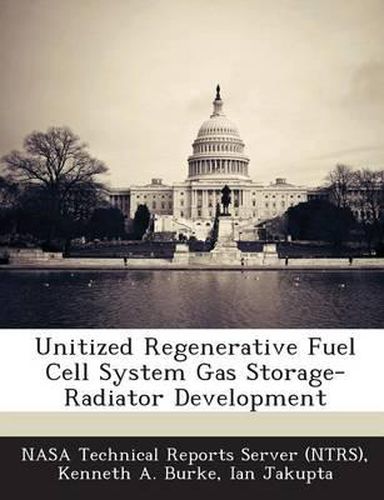Readings Newsletter
Become a Readings Member to make your shopping experience even easier.
Sign in or sign up for free!
You’re not far away from qualifying for FREE standard shipping within Australia
You’ve qualified for FREE standard shipping within Australia
The cart is loading…






High-energy-density regenerative fuel cell systems that are used for energy storage require novel approaches to integrating components in order to preserve mass and volume. A lightweight unitized regenerative fuel cell (URFC) energy storage system concept is being developed at the NASA Glenn Research Center. This URFC system minimizes mass by using the surface area of the hydrogen and oxygen storage tanks as radiating heat surfaces for overall thermal control of the system. The waste heat generated by the URFC stack during charging and discharging is transferred from the cell stack to the surface of each tank by loop heat pipes, which are coiled around each tank and covered with a thin layer of thermally conductive carbon composite. The thin layer of carbon composite acts as a fin structure that spreads the heat away from the heat pipe and across the entire tank surface. Two different-sized commercial-grade composite tanks were constructed with integral heat pipes and tested in a thermal vacuum chamber to examine the feasibility of using the storage tanks as system radiators. The storage tank-radiators were subjected to different steady-state heat loads and varying heat load profiles. The surface emissivity and specific heat capacity of each tank were calculated. In the future, the results will be incorporated into a model that simulates the performance of similar radiators using lightweight, spacerated carbon composite tanks.
$9.00 standard shipping within Australia
FREE standard shipping within Australia for orders over $100.00
Express & International shipping calculated at checkout
High-energy-density regenerative fuel cell systems that are used for energy storage require novel approaches to integrating components in order to preserve mass and volume. A lightweight unitized regenerative fuel cell (URFC) energy storage system concept is being developed at the NASA Glenn Research Center. This URFC system minimizes mass by using the surface area of the hydrogen and oxygen storage tanks as radiating heat surfaces for overall thermal control of the system. The waste heat generated by the URFC stack during charging and discharging is transferred from the cell stack to the surface of each tank by loop heat pipes, which are coiled around each tank and covered with a thin layer of thermally conductive carbon composite. The thin layer of carbon composite acts as a fin structure that spreads the heat away from the heat pipe and across the entire tank surface. Two different-sized commercial-grade composite tanks were constructed with integral heat pipes and tested in a thermal vacuum chamber to examine the feasibility of using the storage tanks as system radiators. The storage tank-radiators were subjected to different steady-state heat loads and varying heat load profiles. The surface emissivity and specific heat capacity of each tank were calculated. In the future, the results will be incorporated into a model that simulates the performance of similar radiators using lightweight, spacerated carbon composite tanks.